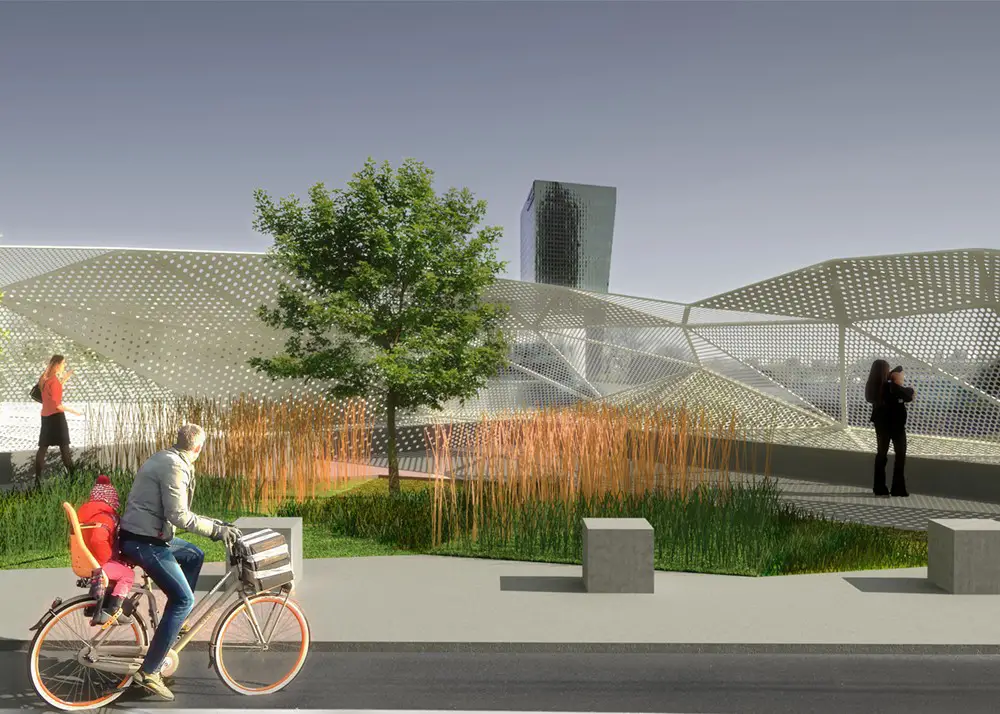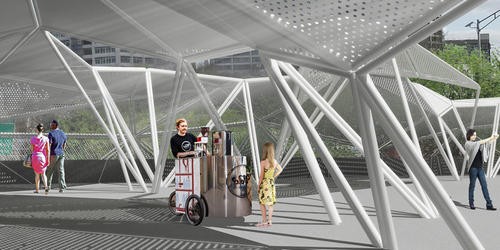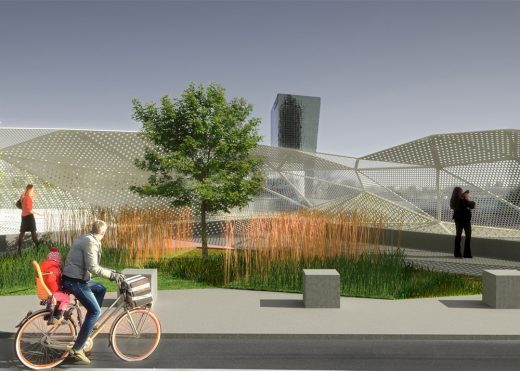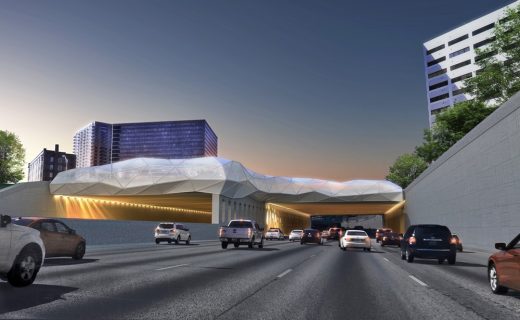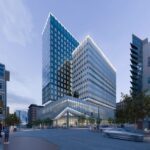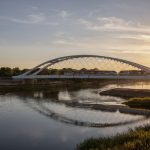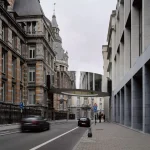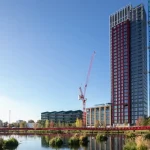Skyscape Atlanta, Georgia architecture, Interstate 75/85 building design
Skyscape Atlanta, Georgia
Georgia Architectural design by Architects: Ricardo Zurita Architecture and Planning, USA
Location: Courtland Street / Ralph McGill Boulevard Bridge, Downtown Atlanta, Georgia, USA
Architects: Ricardo Zurita Architecture and Planning
Skyscape Atlanta
“Clouds are the most evocative, poetic aspect of nature.” Gavin Pretor-Pinney
Sep 26, 2018
Skyscape Atlanta Building
The city of Atlanta has long been considered a horizontal landscape of autonomous neighborhoods distributed over a large metropolitan area. The central core of the city is experienced by many via Interstate 75/85 (Atlanta Connector).
With the ongoing transformation that has brought an influx of new residents and businesses, increasingly the freeways are not only for circulating within the greater metropolitan area, but also to access the streets and neighborhoods of Downtown Atlanta.
The bridge enhancement program can effectively communicate the arrival of Downtown as a diverse and vital urban distinct. Skyscape is a proposal for the Courtland Street/Ralph McGill Boulevard Bridge in Downtown.
The idea of Skyscape sprang from an awareness that of primary importance was the need to redefine the existing relation of the large irregular geometries of the bridge to its surrounding context. Ricardo Zurita Architecture and Planning recognized that the width of the freeway below and the intersection of streets above had created unfortunate conditions: a long, dark space for traffic on the Connector and oddly shaped pedestrian spaces at street level.
The architects aspired to provide a design solution that would improve the inherent deficiencies of the site by a single gesture. Skyscape “smoothes out” the uneven edges creating a three-dimensional “facade” on the bridge for both those on the bridge and those below on the freeway.
The complex geometry of Skyscape was derived using a computer-assisted parametric process. The development of geometrically complex structures is iterative, from analysis to modeling, computation and modifications, seamless between design and construction. Technical feasibility and costs are the most important influencing constraints that can be studied via the parametric process.
The derivation of forms is the result of surface triangulation (based on a 3D Delaunay algorithm) that optimizes the quantity of material used and minimizes structural components. The structure, in essence, is a “kit of parts” consisting of three self-framing structures comprised of a steel-tube supporting frame with roll-formed panels and steel attachments, which are relatively low-cost and common materials.
At street level, the project area includes three zones of Folk Art Park: An homage to St. EON’S Pasaquan, the Rolling Hills of Georgia, and the Windmills. The park originally was intended to enliven these highly visible, unused public spaces by displaying some of the state’s folkloric art and currently is in need of revitalization. The project complements other future improvements that may include site lighting, anti-skateboarding devices, bird deterrents to protect the sculptures, paving and landscape, and interpretative signage.
Folk art expresses cultural identity by conveying shared community values and aesthetics. The art form encompasses a range of utilitarian and decorative media often using whatever materials the artist is able to acquire. We believe that in its architectural expression, our proposal embodies this spirit. The artwork, experienced in the context of a cloud, will be doubly felt as a culmination of imagination.
The Cloud may also become a metaphor of infinite associations: everything from the literary history of the South, with its unique use of language to convey landscape, to cloud computing – an association to Atlanta’s fast-growing tech business sector. The Cloud can be a delightful and unexpected gift to the visitor to the Park as well as to the busy motorist who momentarily will find beauty and perspective by just looking up.
Client: Central Atlanta Progress and Atlanta Downtown Improvement District
Design: Ricardo Zurita Architecture and Planning
Skyscape Atlanta, Georgia images / information courtesy of Chicago Athenaeum
Location: Courtland Street, Atlanta, GA, United States
Architecture in Georgia
Mercedes-Benz Stadium Building Atlanta
Design: HOK
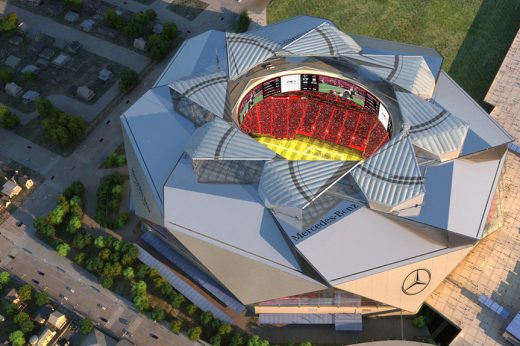
image Courtesy of architects
Mercedes-Benz Stadium by HOK
Buckhead Park Over GA400, Atlanta
Design: ROGERS PARTNERS Architects+Urban Designers with Nelson Byrd Woltz Landscape Architects
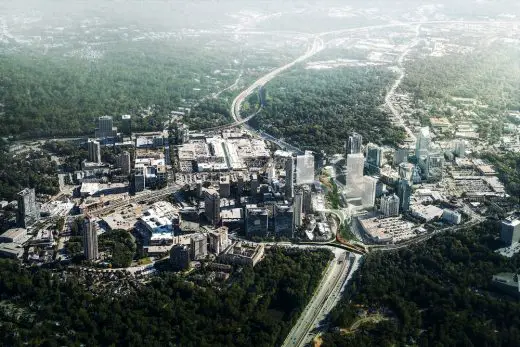
rendering courtesy Rogers Partners / Nelson Byrd Woltz
Buckhead Park Over GA400, Atlanta
Bolton Dining Commons at University of Georgia, Athens
Design: Bruner/Cott Architects and Planners
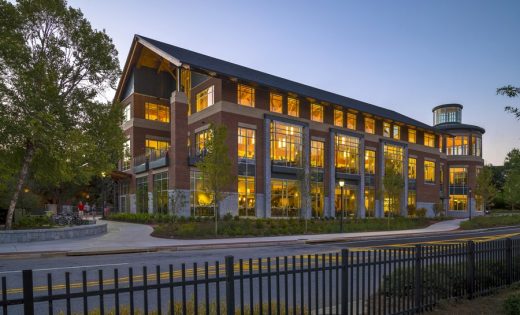
photograph : Richard Mandelkorn
Bolton Dining Commons at University of Georgia
Centre for Civil and Human Rights in Atlanta
Design: David Rockwell, Architect
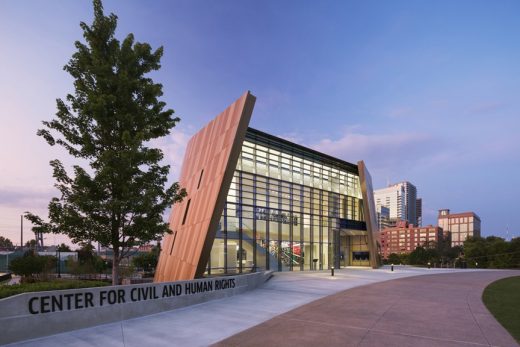
photograph © Albert Vecerka-Esto & Rockwell Group
Centre for Civil and Human Rights, Atlanta
Zuckerman Museum of Art in Atlanta
Design: Stanley Beaman & Sears, Architects
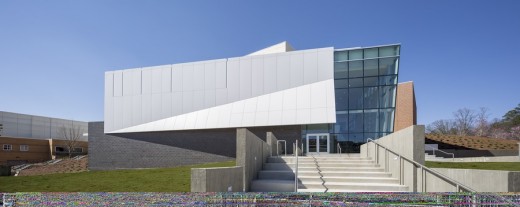
image from architect
Zuckerman Museum of Art in Atlanta
Sway at The Hyatt Regency Atlanta, Georgia
Design: CCS Architecture
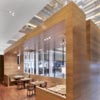
photo from architects
Downtown Art Gallery Atlanta
Design: Stanley Beaman & Sears
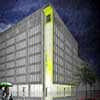
picture from architects
Downtown Art Gallery Atlanta
Atlanta History Center
Stanley Beaman & Sears
Atlanta History Center
Slice House, Atlanta
Design: Studio ST Architects
New House in Atlanta
Website: atlantadesignfestival.net
Comments / photos for the Skyscape Atlanta, Georgia, USA page welcome
Website: Atlanta

